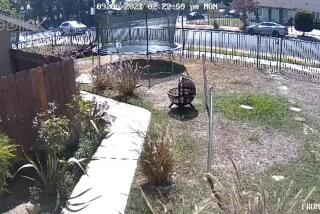Crooks are getting better at faking collectible cars
- Share via
Figuring out the value of a collectible car these days can be more like an episode of “CSI” than “Antiques Roadshow.”
Sure, a vehicle’s condition and relative rarity are keys to its price on the auction block, but potential buyers have to be as concerned with authenticity. Does it have only factory-installed parts? Has the engine been replaced? Do all of the identifying numbers match? Are the documents genuine?
“You want as much of the original product, the original DNA of the car, as possible,” said Colin Comer, a Milwaukee author and expert on detecting fake collectibles.
The problem is that some crooks are very good at swapping out parts and serial numbers and passing off a backyard junker as a real and costly McCoy.
Some supposed collectibles, Comer said, are fixed-up phonies with “nothing more than a title and a potato-chip-size piece of the original car.”
The difference in value between a 100% original and one that isn’t can be significant. A 1971 Plymouth Hemi ‘Cuda convertible that fetched $2.4 million, including commission, at an auction a year ago was deemed nearly flawless -- except that its engine had been replaced.
No matter that the “new” engine was made at roughly the same time.
“If it had been all original, it would’ve brought $4 million,” Comer said of the ‘Cuda, one of only 11 produced that model year.
The fact that the car had a replacement engine was disclosed by RM Auctions, the Canadian company that handled the sale. And McKeel Hagerty, whose company insures almost 600,000 collectible cars, said it has become easier in recent years to document authenticity.
The availability on the Internet of formerly hard-to-find information like vehicle histories makes it easier to check out the provenance of a vehicle. What’s more, the growth of enthusiast clubs for almost every model of collectible car has created a large body of lay experts who can vouch for a car’s authenticity or expose possible frauds.
On the other hand, as the prices that collectors are willing to pay for rare cars go into overdrive, the chances rise that fakes will be on the block parading as something they’re not. “The higher the value these cars realize and the more people that try to purchase them, the more apt you are to see that happening,” said Steve Davis, president of Barrett-Jackson Auction Co., whose annual collector car auction in Scottsdale, Ariz., runs through Sunday.
Noland Adams, an El Dorado, Calif.-based authority on Chevrolet Corvettes, called fraudulent collectibles “a big problem” and added that “it was getting to the point where some of these cars are undetectable.”
Certainly, the market for collectible cars has been in high gear in recent years as wealthy baby boomers have bid up the prices of true classics like Ferraris and Duesenbergs as well as the beloved cars of their youth -- in particular the big-engined muscle cars that came out of Detroit in the late ‘60s and early ‘70s.
Christie’s decision last February to scotch the auction of a historically significant race car from the 1930s, a 12-cylinder Auto Union D-type, helped draw attention to the issue of automotive authenticity. Thought to be the car that won the 1939 French Grand Prix, it was expected to draw bids of as much as $15 million. Christie’s withdrew it after determining that the car actually was built on the chassis of the sixth-place finisher in that year’s race.
Race cars can be especially difficult to authenticate. Engines are routinely blown and swapped out. Body work crumpled in crashes is replaced.
“There might not be an original part on the car other than the number on the frame,” said Ralph Hubbard, a Pasadena auto valuation expert.
The explosion of interest in muscle cars has complicated matters for collectors. It takes real skill and thousands of dollars for crooks to convert a fairly mundane old car like an Auburn sedan into the rare and coveted Boattail Speedster version of the car. Dodge Chargers and Chevy Camaros built on Midwest assembly lines are considerably easier to fake.
“Any car that is assembled from mass manufactured parts can be duplicated without a great deal of trouble,” said Alan Taylor, an Escondido classic car restorer and authentication expert.
Potential buyers shouldn’t relax just because all of the various numbers and other documentation for a particular car match up. Serial numbers on engine blocks can be ground off and restamped. Fender tags and “build sheets,” which reveal the car’s original equipment and trim, are counterfeited and sold over the Internet. Tamper-proof rivets used to mount vehicle identification plates are being reproduced so a VIN can be changed without detection.
Comer, the Milwaukee fraud expert, said putting a patina of age on newly laser-printed documents is a special touch mastered by some auto counterfeiters.
“I’ve taken build sheets down to the Milwaukee art museum to have them checked to see if the paper is really old,” he said. “If I’m writing a million-dollar check, I want to make sure it’s a real car.”
Authenticators like Comer charge $500 to $2,500 and up to check out cars for prospective buyers. That can be especially important in a private-party sale.
“It takes a little money, but when you’re talking about investing $50,000 or $100,000, a few hundred dollars is a nice little insurance package,” said Phil Skinner, collectible-car editor at Kelley Blue Book.
The auction houses say they do their best to ensure authenticity, checking as much paperwork -- including build sheets, repair receipts and contest awards -- as possible.
But, said Davis of Barrett-Jackson, “no auction can guarantee authenticity. We do everything we can to assure that all of our cars are what they’re advertised to be. But at the end of the day, it’s the consignor that makes the representation.”
martin.zimmerman @latimes.com






